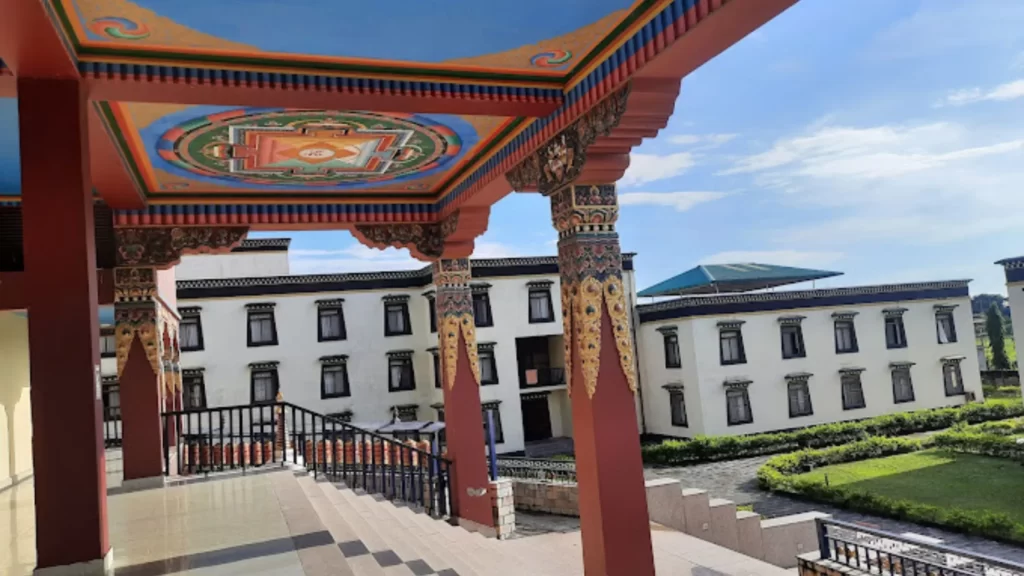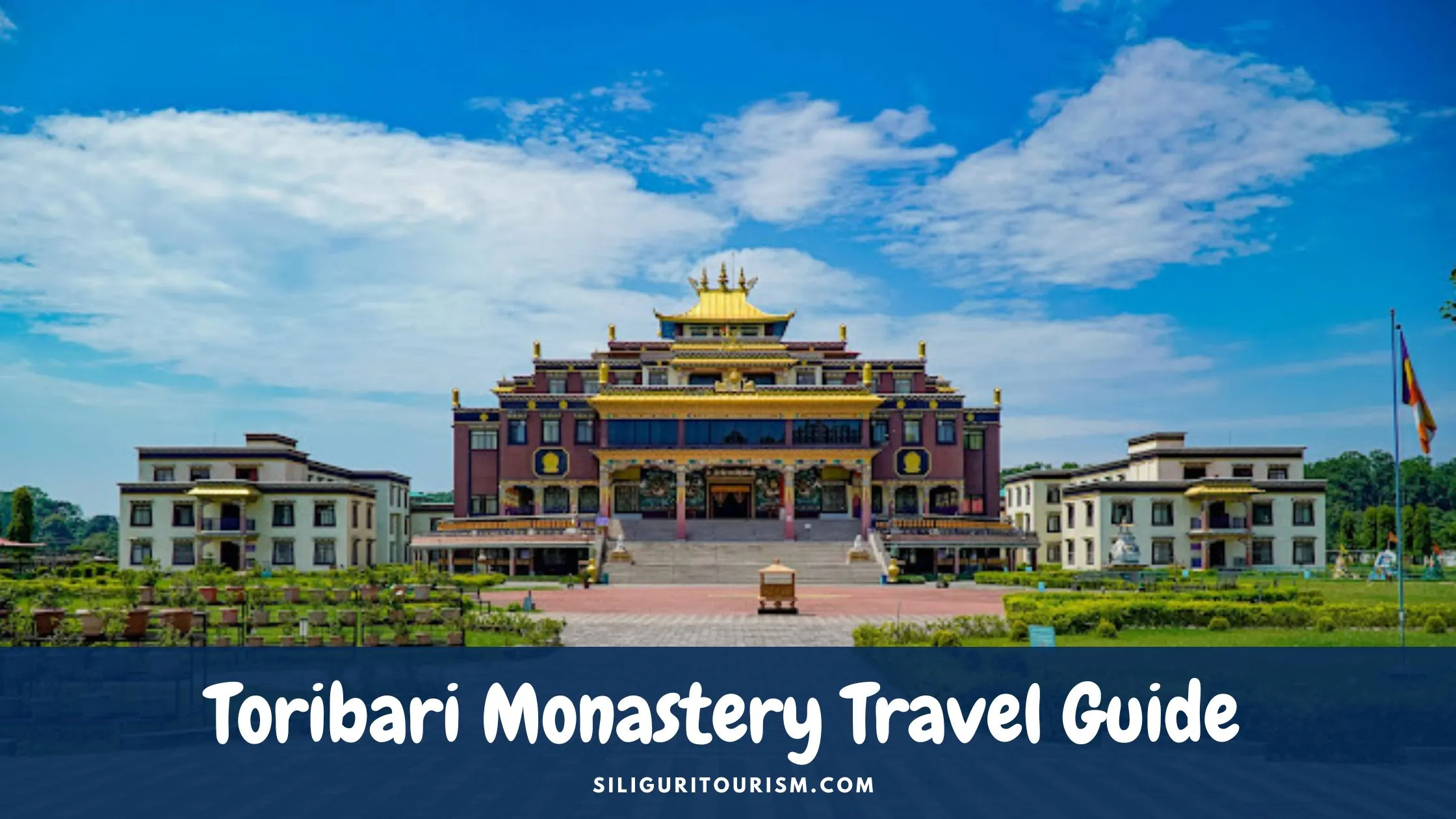Nestled amidst the tranquillity and beauty of nature, the Ewam Monastery in Siliguri, India is a sight to behold. This Buddhist monastery embodies spirituality, serenity, and ethereal charm at its best. Set against an exquisite backdrop of lush greens and quaint settlements, the monastery exudes a mystic and rustic vibe. The word ‘ewam’ itself signifies uniqueness and exoticism.
Located 11 km away from the hustle and bustle of Siliguri’s city center, the Ewam Monastery follows the Nyingma School of Tibetan Buddhism, which is considered the oldest among the four traditional schools.
A significant pilgrimage site for the Buddhists, the monastery attracts not only religious enthusiasts but also curious explorers who seek solace and calmness away from the city’s chaos. With its unmatched tranquillity and blissful ambiance, the Ewam Monastery offers a much-needed break from the city’s noise and chaos, making it an ideal getaway destination.
Toribari Monastery History
Founded in 1999, Ewam is a non-profit organization aimed to promote spiritual education globally, under the guidance of Tulku Sang-ngag Rinpoche. Ewam prioritizes the learning and practice of the Nyingma school of Tibetan Buddhism especially in the western countries. The Garden of One Thousand Buddhas in Montana also houses the Ewam Buddhist Institute, established by Rinpoche in July 2016.
In addition to providing spiritual education across the world, Ewam is dedicated to supporting the practice of Tibetan Buddhism in Nepal. Ewam helps two nunneries and a monastery in Nepal and provides educational support and medical facilities at its institute located in Siliguri.
Besides these, Rinpoche also established Ewam institutes in Hong Kong, Montana, New Mexico, and Taiwan. Notably, Rinpoche’s contribution to lessen the suffering and biased treatment of women led to the establishment of The Turquoise Leaf Nunnery in Nepal. Rinpoche believes in eradicating gender inequality and bias in all forms.
Ewam Buddhist Monastery Siliguri History
As far back as 2005, the early stages of the Ewam India Project were being planned and developed. The vast expanse of uncultivated land was to be transformed into the Ewam Monastery we know today. In December 2005, the site’s boundary was constructed, and in that very month, the colourful prayer flags were put up to mark the symbolism of the project. It wasn’t until the 6th of January in 2006 that Tulku Sag-ngag Rinpoche made his first visit to the Ewam India Project site.
After two more years of praying and constructing, the land consecration ceremony took place on 26th February 2008, following the Buddhist religious rituals, and a fortune vase was buried at the Ewam India Project site. By July 2009, the foundation and the first floor pillars for the primary building had been erected.
The project also involved an administrative building, but it still took years to be completed entirely. Finally, on 21st January 2016, the Ewam India Project was celebrated with Drupchen prayers, meaning ‘vast accomplishment’, held within the entirely erected and painted structure.
Toribari Monastery Attractions

The ancient Buddhist architectural style inspires the Ewam Monastery, with seven stories bearing stunning artwork and intricate carvings. The walls and entire ceilings are adorned with the brilliant Kilkhor drawing, enveloping every inch of the interiors and exteriors in spirituality.
Inside the temple block, grand statues of Buddha meditating are installed, while the monastery is predominantly painted in brownish-red, with radiant hues of bright red and gold on the pillars. The front-facing side, primarily in golden shades, adds to the monastery’s appeal, complementing its surroundings.
The monastery features a massive circular yard on the backside of the main building, with a wide flight of stairs at the front, leading to the first floor, and an array of prayer wheels arranged throughout the circular pathway lending it its unique character. Visitors can also delight in stunning views of the surrounding nature from the monastery.
The monastery’s roof is another fascinating feature, with the entire topmost section exuding the “roof style of Tibetan Monasteries.” The roof’s edge depicts a graven image of an unusual creature that resembles a hybrid of an elephant and a dragon. The gold paint used to cover the carvings on the roof and the edges shimmers brilliantly during dawn, daylight, and sunset, mirroring the monastery’s ethereal beauty and grandeur.
How to Reach Ewam Buddhist Monastery
Situated in Toribari Village, Salugara, the Ewam Monastery enjoys a serene location amidst lush greenery, not far from Bengal Safari in Siliguri, India. Pilgrims and explorers seeking spiritual bliss can conveniently reach the Ewam Monastery as the city offers prompt and inexpensive transportation facilities.
Despite its seclusion from the bright lights and glamour of contemporary life, the monastery is easily accessible via proper road networks that ensure a smooth journey. The natural beauty and peaceful surroundings make Ewan Monastery an ideal getaway destination for those seeking solace and relaxation.



